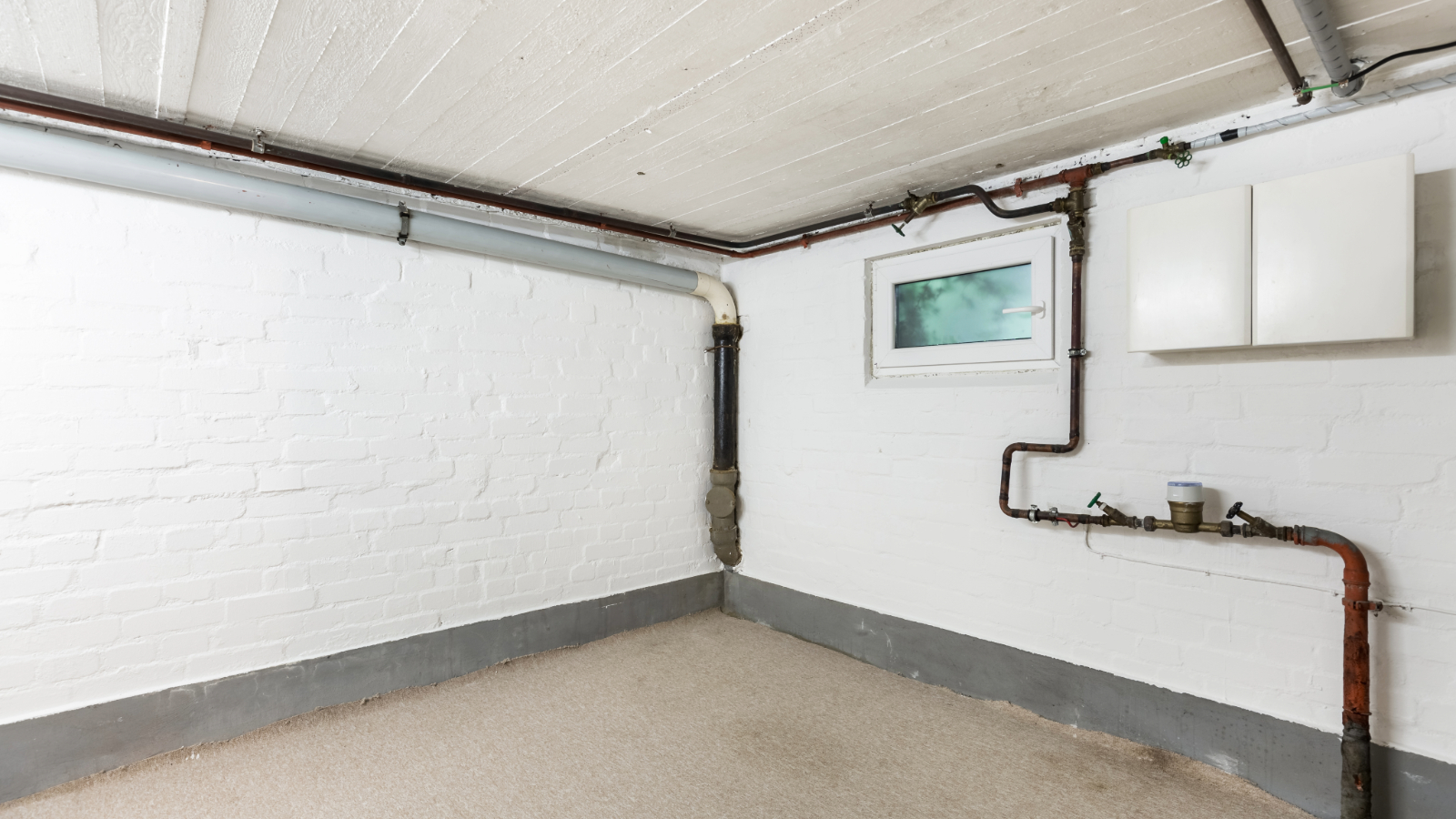Inspiring orangery extension ideas for every house style
With the right orangery extension ideas you can not only add valuable extra space to your existing home but also draw in lots of natural light, as well as adding plenty of character
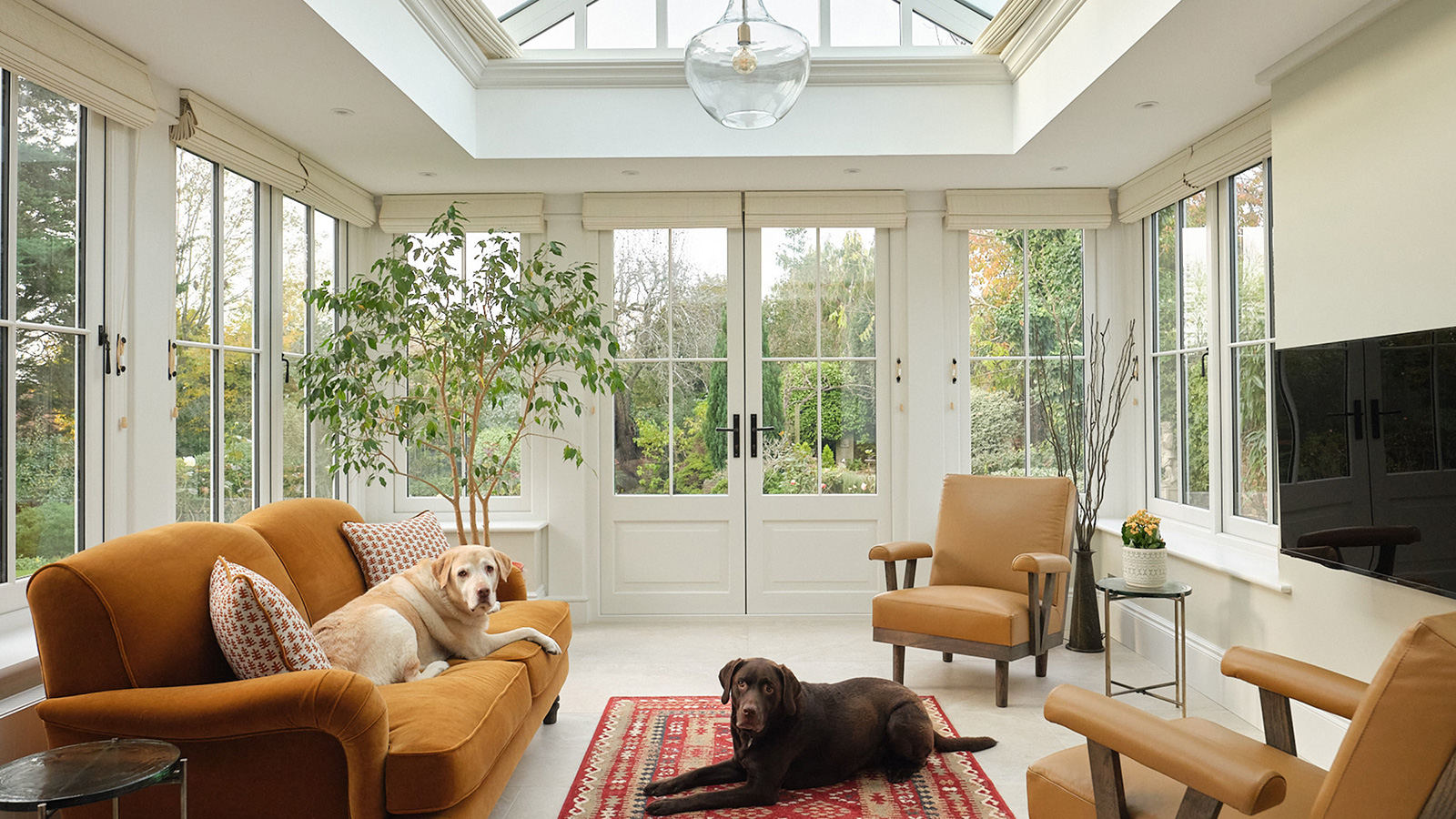
If you are keen to start developing some orangery extension ideas to get your home project under way then this round-up of some of the most beautiful examples around shouldn't disappoint.
While some of the conservatory ideas out there also make great additional spaces, an orangery tends to bring with it a slightly more solid feel and will really finish off a period or traditional style home perfectly.
"Orangeries are a sophisticated alternative to the traditional conservatory," says Jo Trotman, marketing manager for The Residence Collection. "Including more brickwork than a conservatory, orangeries are often built to look like a natural extension of the property."
Here, we've pulled together some of our favourite orangery extension ideas to give you a boost of inspiration — from contemporary orangeries to those that will highlight all the best elements of a period property.
1. Echo the original house in your orangery design
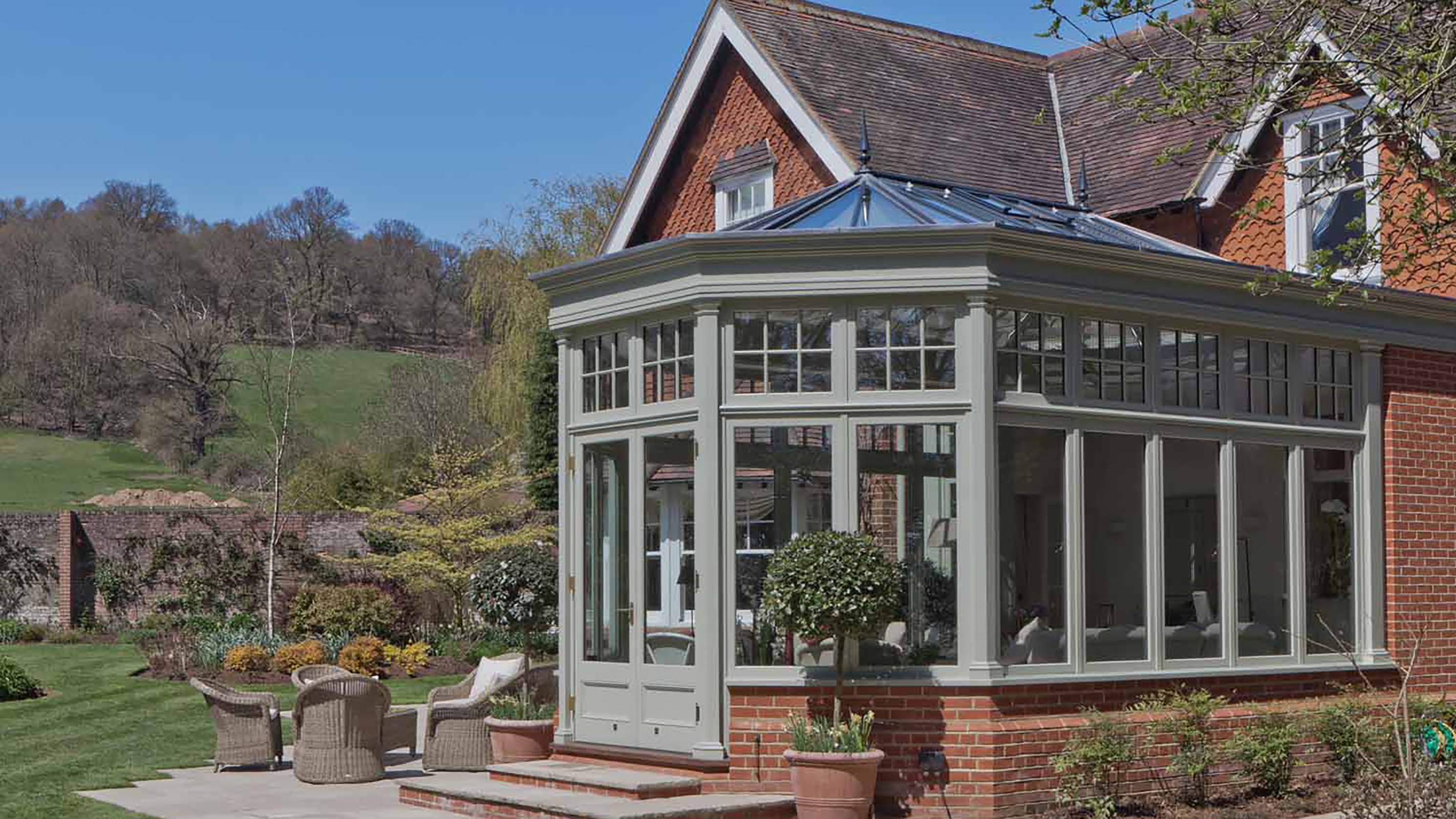
When working with your supplier to come up with orangery ideas that will work alongside your existing home, it can be a good idea to reflect some of the details found within its architecture. This could include the brickwork pattern, window styles or even roofing materials.
This beautiful timber and brick orangery extension by Vale Garden Houses complements the house it is attached to perfectly thanks to matching brickwork and window details.
2. Locate your orangery extension to the side
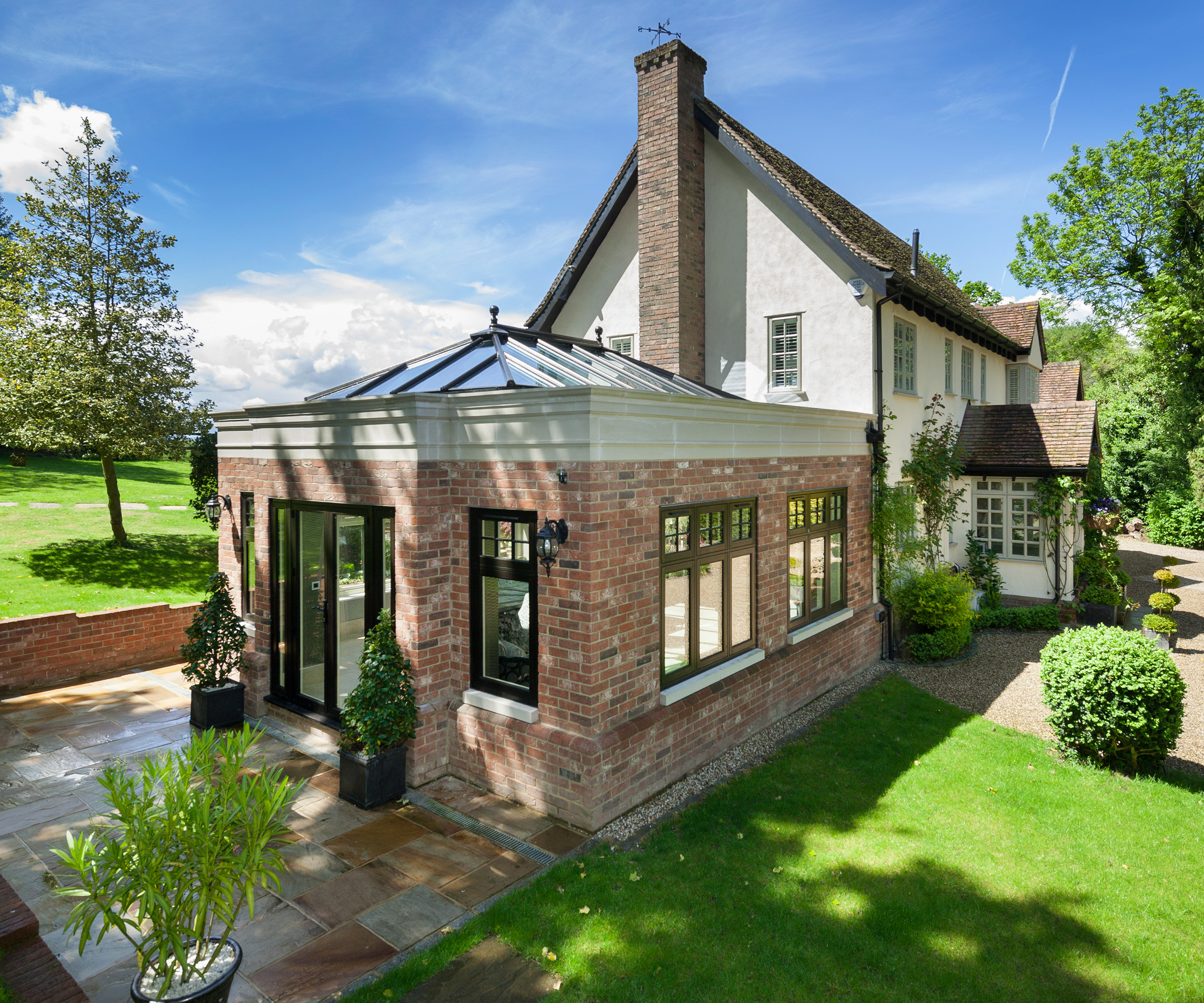
While orangeries are often located to the rear of a property, there is no reason why this has to be the case – in some instances it can actually work better to site them to one side of the house instead. The key lies in thinking about how you want your orangery extension to fit into the overall interior layout of your home. It is also important to think about how its position will work in terms of natural light.
Bring your dream home to life with expert advice, how to guides and design inspiration. Sign up for our newsletter and get two free tickets to a Homebuilding & Renovating Show near you.
“Roof lanterns and skylights are often incorporated into orangeries, giving a luxurious feel and maximising on natural light, making it a real statement in the home," points out Jo Trotman. "To incorporate these elements, it’s important to position an orangery suitably to make the most of the sunlight, but be wary of south facing spaces as these can overheat easily.
In this example, from The Residence Collection, it made more sense to build the beautiful orangery to the side of the house it is now attached to due to the sloping nature of the rear garden. Note the traditional-style roof lantern and windows that help to tie the orangery in with the period property.
3. Pair an oak framed orangery with a period house
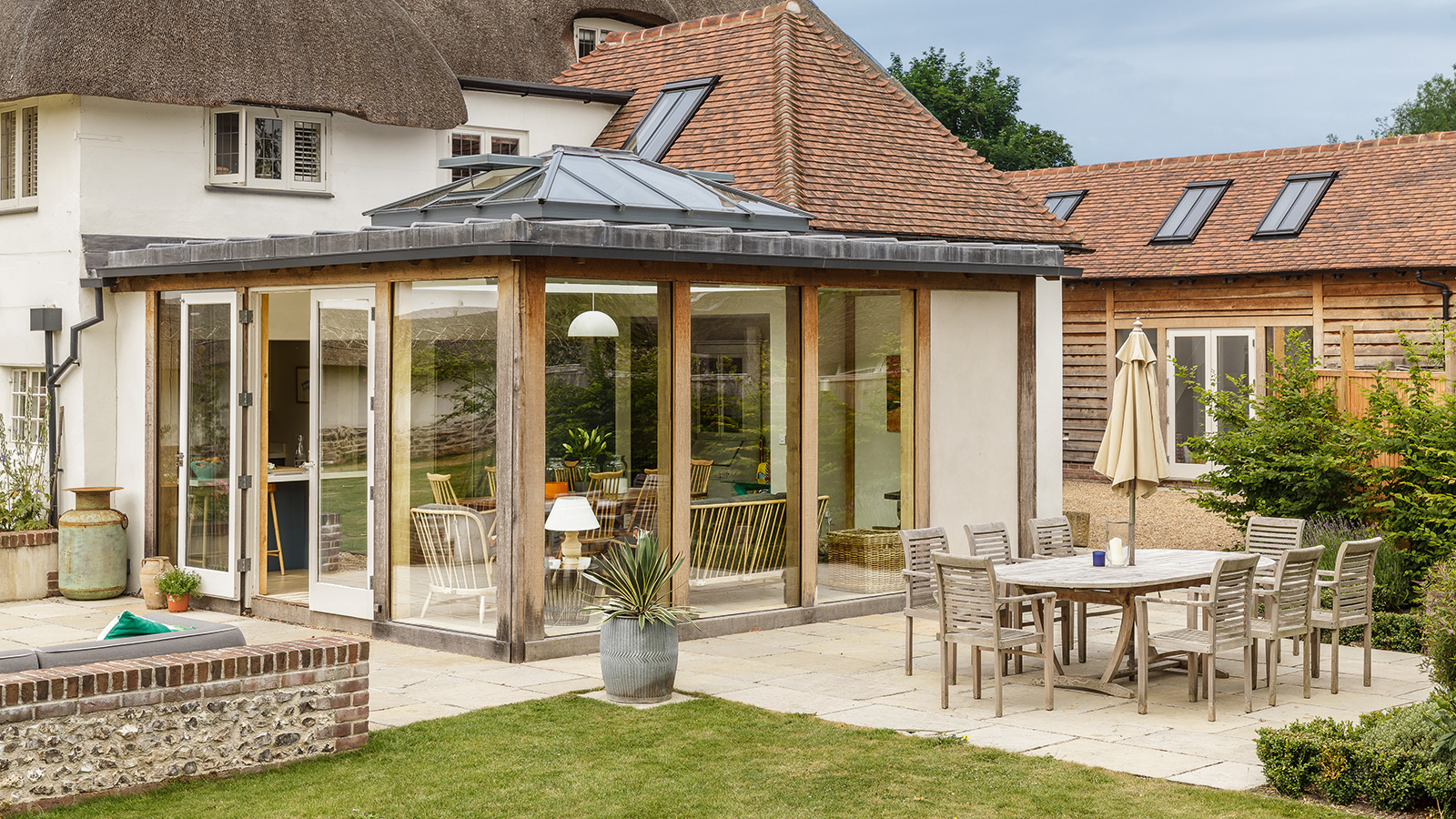
Oak frame extensions are a really popular way to add extra space to all kinds of properties – not just those constructed from a timber frame. They add tonnes of character and charm to both period and modern homes.
This Grade II listed, 17th century house has been sensitively extended using an oak frame addition featuring glazed panels that wrap around the entire space, as well as an enormous roof lantern set into the flat lead-covered roof. It now houses a bright new kitchen diner.
4. Use your orangery as a relaxed living space

In family homes, a layout that provides a couple of living spaces can work really well. Often one tends to be the space in which all member of the household can spend time together while the other provides a quieter, more grown-up retreat, or perhaps a teenage hang-out room.
An orangery extension can be the ideal way to create this additional living room. They enjoy plenty of natural light, feel bright and uplifting and provide great views out of the garden, as can be seen in this example by David Salisbury.
"This is a great way to add extra living space to your home without quite the same level of disruption of building a solid extension," says Karen Bell, sales and marketing Director at David Salisbury. "Plus they can often be built without the need for a full planning application."
5. Enjoy a light-filled dining room

If you want to impress your guests – or just enjoy meals in style – then it is a great idea to use your orangery extension to bring your dining room ideas to life.
“Orangeries are the perfect addition to the home to create a formal dining room," agrees Jo Trotman.
In this elegant space the dining table has been located directly beneath the stunning roof lantern ensuring it is the focal point of the room.
Jo Trotman also has some tips on how to finish off the space to ensure you get maximum enjoyment from it.
"Keep the interiors light and airy by choosing a trend that will complement the extra space in your home," suggests Jo. "Try the Japandi trend with its focus on minimalism and functionality, or the cosy coastal trend with its nautical stripes and dark wood elements.
“Good quality blinds and curtains are also a great addition to orangeries to offer all-year round temperature control and privacy.”

Jo Trotman is marketing manager for premium window and door designer The Residence Collection. She has over 20 years experience at a German PVCu systems company, and considerable expertise in the sector.
6. Use a contemporary orangery extension for contrast

Even traditional-style homes can benefit from modern extension ideas — in fact the contrast is often a great way to highlight the original details of an existing building, as well as pull in extra natural light into what can be rather gloomy spaces.
This modern orangery extension, with aluminium-framed glazing and a reflective choice of flooring, has been put to great use as a sunny dining spot from which to enjoy clear views of the garden.
7. Use your orangery extension as a link
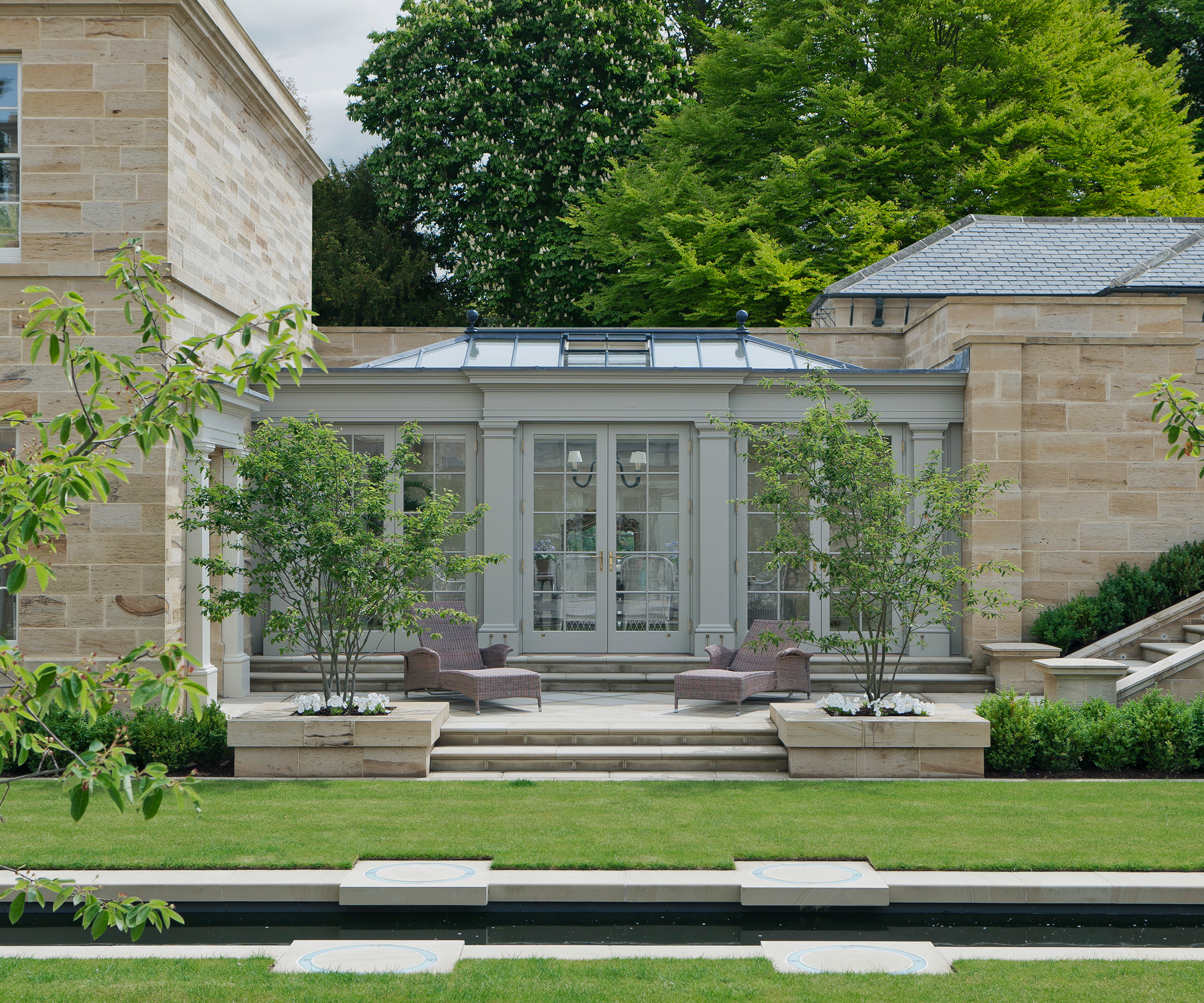
Orangeries make fantastic glass link extensions. Not only do they tie two separate elements of a building together beautifully but they can also become useful extra living spaces in their own right — perfect for sunny dining rooms, casual seating areas or home offices.
This example is by Vale Garden Houses. It manages to both blend in harmoniously with the original stone Georgian building, as well as stand out as a newer structure –plus it forms a useful living space from which to enjoy garden views.
8. Brighten up dark middle rooms
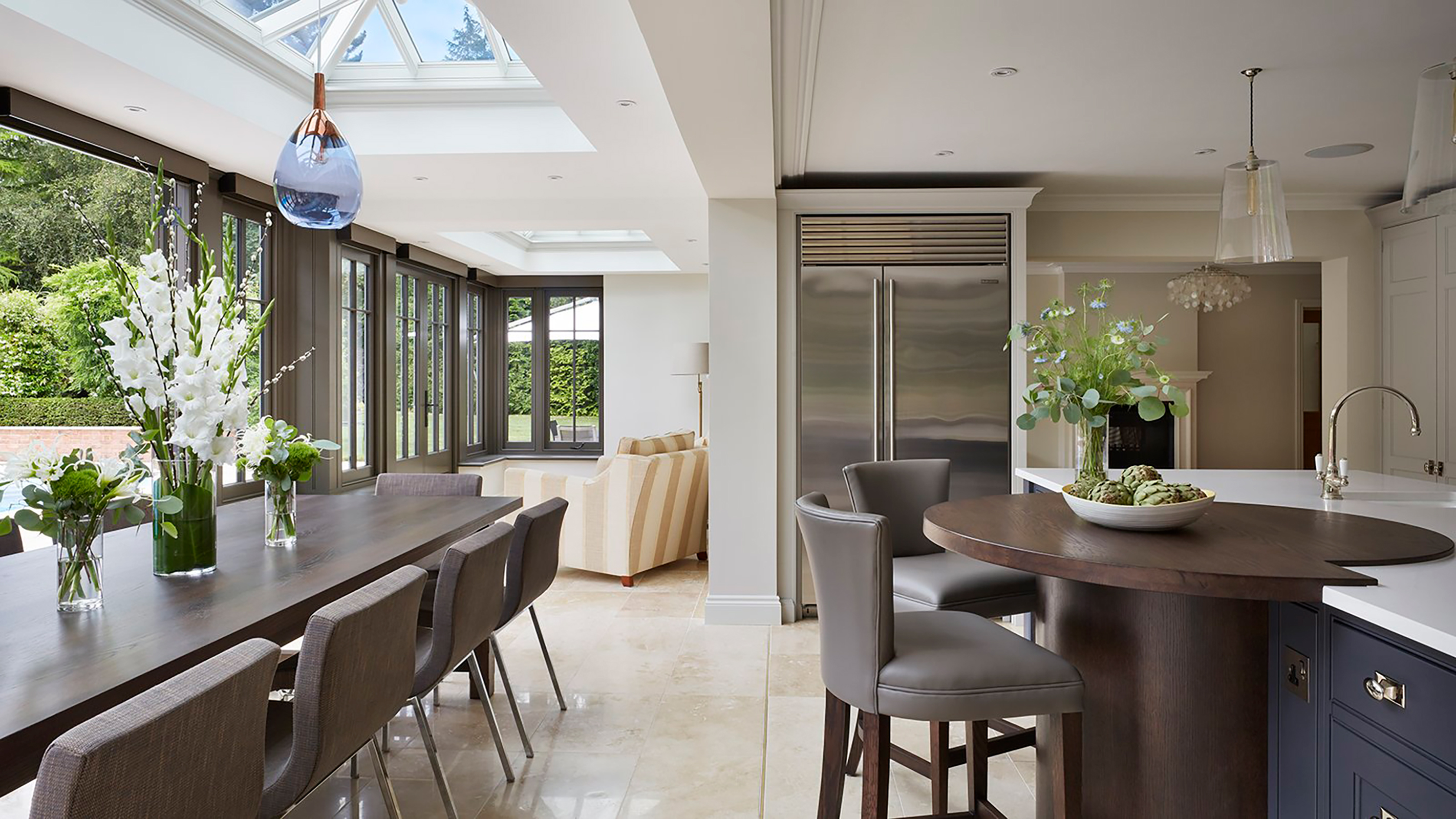
The addition of an orangery can not only add extra space – it is also a brilliant way to draw natural light into central areas of the home. This can be useful in properties with middle rooms that lack any source of light from outdoors.
"Ensuring a flow of natural light into your home is important for our overall health," says Karen Bell of David Salisbury.
"A garden room with generous proportions of windows and roof glazing will create a light and airy living space, which can be enjoyed all year round – ideal for the winter months, when natural light is at a premium, and perfect for summer, when the warmer weather will allow in plenty of fresh air from opening windows and doors."
Here, an orangery kitchen extension idea from Westbury Garden Rooms has been added along the width of this house, where it not only provides a beautiful living and dining space, but also brings light into the kitchen within.

Karen Bell is sales and marketing director at David Salisbury. She has a wealth of experience in designing orangeries as well as advising customers on the best solutions for their homes.
9. Add space elsewhere with a stand-alone orangery
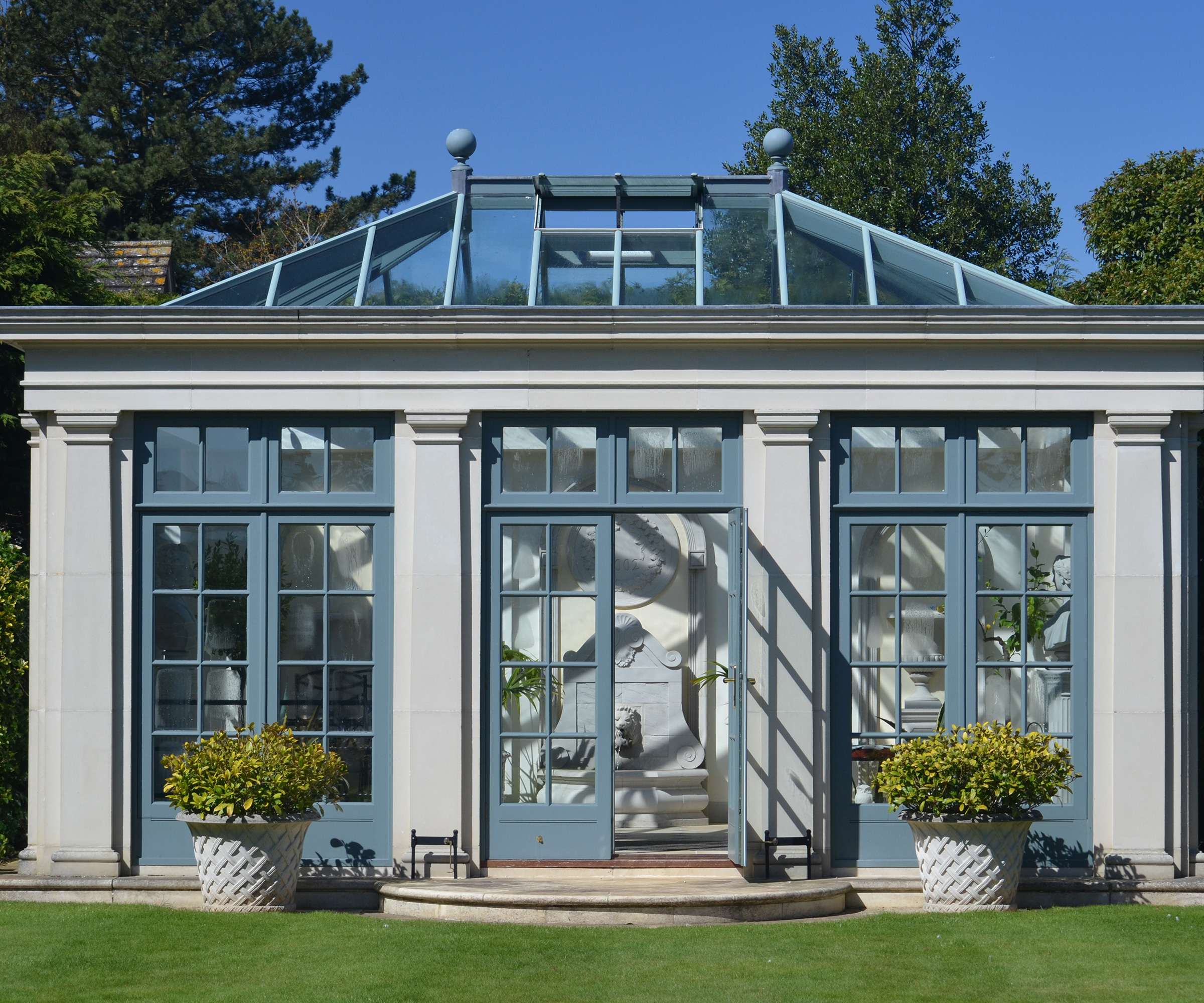
Orangeries first began to appear in Britain in the 17th century but, back then, they weren’t seen as an extension built on to a house as extra space as they are today – they were separate structures used by the wealthy to keep and cultivate non-native and delicate plants.
If you prefer the idea of a separate orangery that can still provide useful extra space, as well as somewhere to retreat to, away from the main house, then take inspiration from this beautiful stone-built example, by Haddonstone.
10. Go grand with a full-width orangery extension
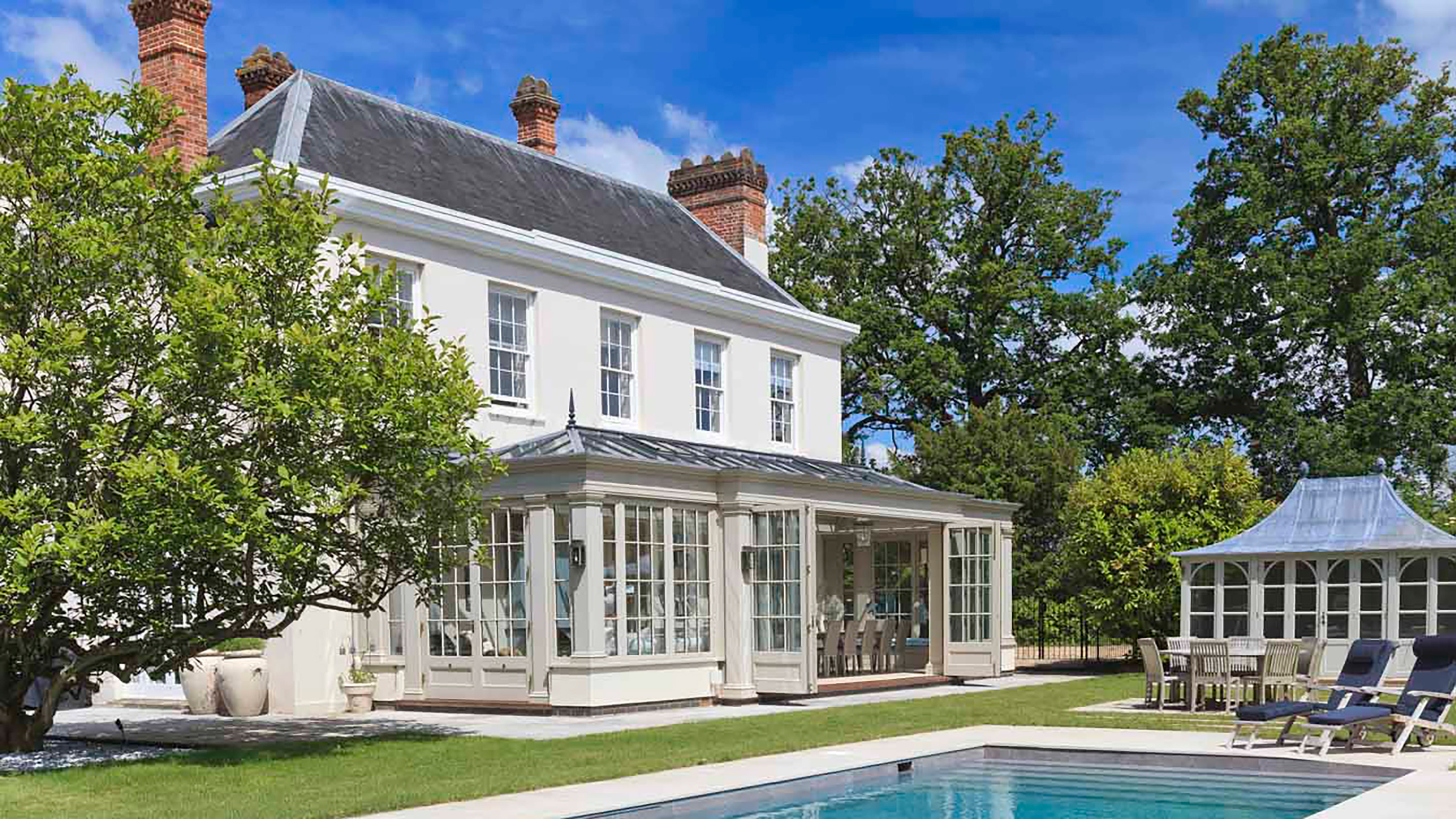
If you are building an extension with an orangery then it will be worth going as big as you can (and as will be permitted by the local planners) in order to really make the project worth your time, money and effort – providing the design remains in proportion to the house it will adjoin. Consider a full-width orangery that spans all the way across the rear of your home in order to connect it with the garden and bring plenty of light into your interiors.
This stunning example is by Vale Garden Houses. Thanks to the choice of roofing materials and window design, it manages to effortlessly blend into the existing house despite its impressive size.
FAQs
Can you add an orangery to a listed building?
While in some cases it is possible to add an orangery to house without needing to apply for planning permission, if you live in a listed building things will be very different.
That's not to say that you won't be allowed to add an orangery but you will need to apply for listed building consent. It may well be wise to use a specialist bespoke orangery company with experience of designing additions to listed buildings to help you with your plans and application.
Can you use an orangery as a kitchen?
Just as kitchen conservatory extensions have increased in popularity, so too have kitchen orangeries. The bright, light-filled nature of these spaces make them an absolute pleasure to spend time in – plus they give you the option to open out the kitchen to an outdoor dining space in the sunnier months.
They are a great solution if you are searching for kitchen conservatory ideas, but do take time to plan out your kitchen design thoroughly to ensure you have enough solid wall space for all your units. It tends to be a good idea to locate the practical kitchen area to the rear of the orangery extension where it will benefit from more solid wall space, as well as existing connections to services such as water and electricity.
While orangeries can make brilliant extensions, many homeowners tend to worry that they will overheat in the summer and be cold in summer – in the same way that some conservatories can.
However, this need not be the case and if you are worrying about extension overheating then there are several steps you can take to ensure this doesn't happen. Good ventilation sources, adequate shading (such as an overhang or even good blinds) as well as solar control glass are all good solutions.
Natasha was Homebuilding & Renovating’s Associate Content Editor and was a member of the Homebuilding team for over two decades. In her role on Homebuilding & Renovating she imparted her knowledge on a wide range of renovation topics, from window condensation to renovating bathrooms, to removing walls and adding an extension. She continues to write for Homebuilding on these topics, and more. An experienced journalist and renovation expert, she also writes for a number of other homes titles, including Homes & Gardens and Ideal Homes. Over the years Natasha has renovated and carried out a side extension to a Victorian terrace. She is currently living in the rural Edwardian cottage she renovated and extended on a largely DIY basis, living on site for the duration of the project.

